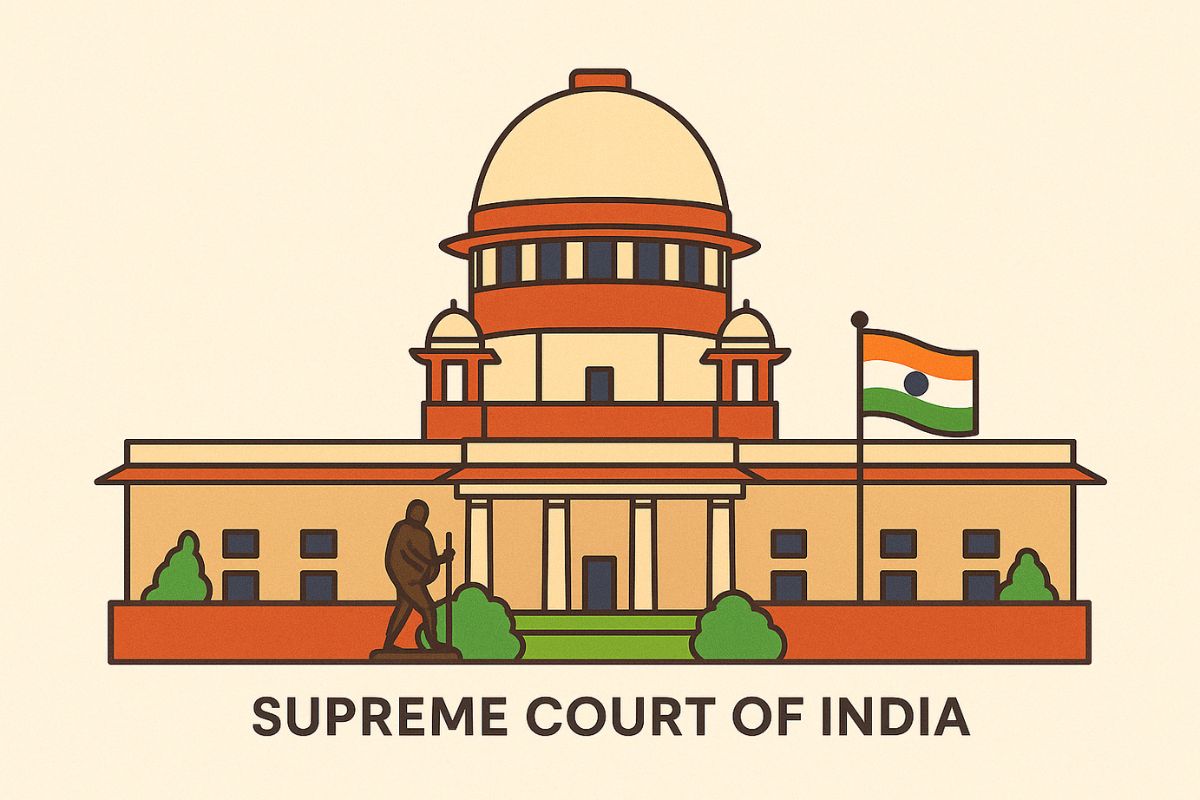Can Supreme Court Judgements Be Overturned?

The Supreme Court of India is the highest judicial authority in the country. It has the final say on constitutional, civil, and criminal matters. But here’s a question that many law students, citizens, and even young advocates often ask: Can a Supreme Court judgement be overturned?
The simple answer is yes, but under certain conditions. Let’s explore how and when this can happen — along with real-life examples.
Understanding the Finality of Supreme Court Judgements
Article 141 of the Indian Constitution states that “the law declared by the Supreme Court shall be binding on all courts within the territory of India.”
This means:
- High Courts and subordinate courts must follow Supreme Court rulings.
- The judgement becomes precedent (a binding example) for future cases.
But even though the Supreme Court’s decisions are binding, they are not immune to change. There are specific ways through which these judgements can be reviewed, reconsidered, or even overturned.
How Can a Supreme Court Judgement Be Overturned?
There are four primary ways a Supreme Court judgement can be overturned:
Review Petition (Article 137)
The Supreme Court has the power to review its own judgement. This is allowed under Article 137 of the Constitution.
- A party can file a review petition within 30 days of the judgement.
- It is usually heard by the same bench that gave the original verdict.
- Review is allowed only on limited grounds such as:
- Discovery of new evidence
- An error apparent on the face of the record
- Violation of principles of natural justice
Example: S. Nagaraj v. State of Karnataka (1993) – The Court stated that the power of review is not an appeal, but a safeguard against miscarriage of justice.
Curative Petition
Introduced in Rupa Ashok Hurra v. Ashok Hurra (2002), a curative petition is the last legal remedy in India.
- It is filed after the review petition is dismissed.
- It is heard by the senior-most judges including the Chief Justice.
- It is entertained only in rare cases to prevent gross injustice.
Example: Yakub Memon’s case – His curative petition was the final attempt before the execution of his death sentence.
Larger Bench Reconsideration
Sometimes, a larger bench of the Supreme Court can overrule a previous decision made by a smaller bench.
This happens when:
- The previous ruling is found to be incorrect in law.
- There are conflicting views between benches.
Example:
In Puttaswamy case, Justice Chandrachud (writing for a plurality of four judges), Justice Nariman and Justice Kaul all categorically overruled ADM Jabalpur case. Their reason was that there were certain basic rights that were recognised by the Constitution, but not conferred by it.
Through Constitutional Amendment
Sometimes, if the legislature disagrees with the interpretation of a law or Constitution by the Supreme Court, it can amend the Constitution itself.
This doesn’t directly overturn the judgement, but changes the legal basis on which it was made.
Example:
- Kesavananda Bharati v. State of Kerala (1973) held that the basic structure of the Constitution cannot be changed.
- Parliament has made multiple constitutional amendments trying to balance its powers with this doctrine.
Another example is:
- Indira Sawhney v. Union of India (1992), which upheld the 27% OBC reservation.
- Later, the 93rd Constitutional Amendment allowed reservation in private educational institutions, altering the scope of earlier judgements.
Does This Happen Often?
No, overturning a Supreme Court judgement is rare and done with great caution. The Court itself follows the principle of stare decisis, which means “to stand by things decided”.
But the Court has also acknowledged that law evolves. So, where earlier decisions become outdated, unjust, or conflict with constitutional values, the Court has shown the willingness to correct itself.
Importance of Overruling in a Democracy
Overruling a judgement is not a weakness. In fact, it shows that:
- The judiciary is open to evolution.
- It can correct its past errors.
- It respects changing social realities.
This keeps the Constitution alive and relevant.
Summary Table: How a Supreme Court Judgement Can Be Overturned
| Method | Description | Example |
| Review Petition | Reconsideration by the same bench for limited reasons | S. Nagaraj v. State of Karnataka |
| Curative Petition | Final remedy to prevent gross miscarriage of justice | Yakub Memon Case |
| Larger Bench | A bigger bench overrules an earlier smaller bench decision | ADM Jabalpur overruled in Puttaswamy |
| Constitutional Amendment | Parliament changes law or Constitution to nullify effect | 93rd Amendment after Indira Sawhney case |
Summary
Yes, Supreme Court judgements can be overturned — but only under specific legal conditions and with great care.
This ensures that the integrity of justice is preserved while also keeping the legal system dynamic and responsive.
It’s a beautiful balance between finality and flexibility, where the highest court of the land can look back, learn, and lead with fairness.
Calling all law aspirants!
Are you exhausted from constantly searching for study materials and question banks? Worry not!
With over 15,000 students already engaged, you definitely don't want to be left out.
Become a member of the most vibrant law aspirants community out there!
It’s FREE! Hurry!
Join our WhatsApp Groups (Click Here) and Telegram Channel (Click Here) today, and receive instant notifications.





